The Last of Us 2 Remastered is less a remaster and more the definitive version of Naughty Dog’s action-adventure masterpiece.
By and large, this is TLoU2, the complete package (™). With a brand-new roguelike mode, the addition of Lost Levels, developer commentary, and current-gen improvements, it’s Neil Druckmann’s director’s cut. It’s a solid effort that brings one of PlayStation’s greatest games firmly into the current gen — but it’s marred by framerate issues I hope get patched.
The Last of Us 2 Remastered Review: Returning Again and Again
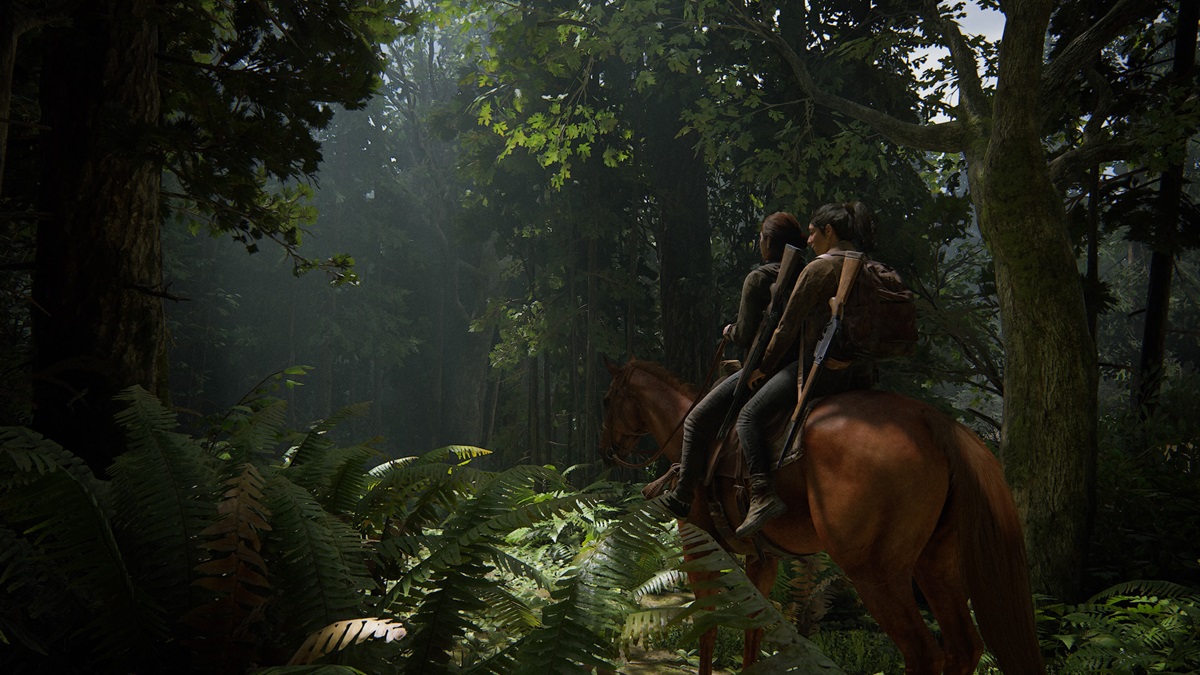
Though I recently played The Last of Us Remastered, I wasn’t rushing to play The Last of Us 2 Remastered. I’d had my fill of Ellie’s revenge-o-rama three and a half years ago, and the scars were still fresh.
But there I sat, watching the game download and install on my PS5, waiting for the inevitable gut punch that came when I rolled credits. And at that one point in the first act.
Unsurprisingly, TLoU2 Remastered doesn’t change the game’s story outright. If you played the original, the same gore-soaked descent into sorrow and retribution remains. There are bright spots sprinkled throughout and hope peers through the gloom sporadically, but this is still a story of how violence begets violence – and how the strength to break that cycle is both at our fingertips and monumental.
I say the story doesn’t change because TLoU2 Remastered includes three lost levels removed from the original PS4 version. And to be clear: they aren’t added to the campaign storyline. Instead, they’re standalone experiences available in the Extras menu as soon as you boot up the game.
These individual snapshots focus on very specific slices of TLoU2 Naughty Dog killed for various reasons, and each is in a different stage of development. They’re included here as is for us to steal a grander look at the characters involved and Naughty Dog’s larger vision. At least in theory.
TLoU2’s lost levels are preceded by commentary from Druckmann should you choose to enable it (which you should), and interactable areas within the levels provide more commentary from developers and designers.
Overall, they act as a neat window into the development process, add a few new bits of (unofficial?) lore, and provide more insight into Ellie specifically. And while I enjoyed them all and am happy to have experienced them, none feels essential – and I guess that’s why they got cut. In all, you can finish all three in less than an hour.
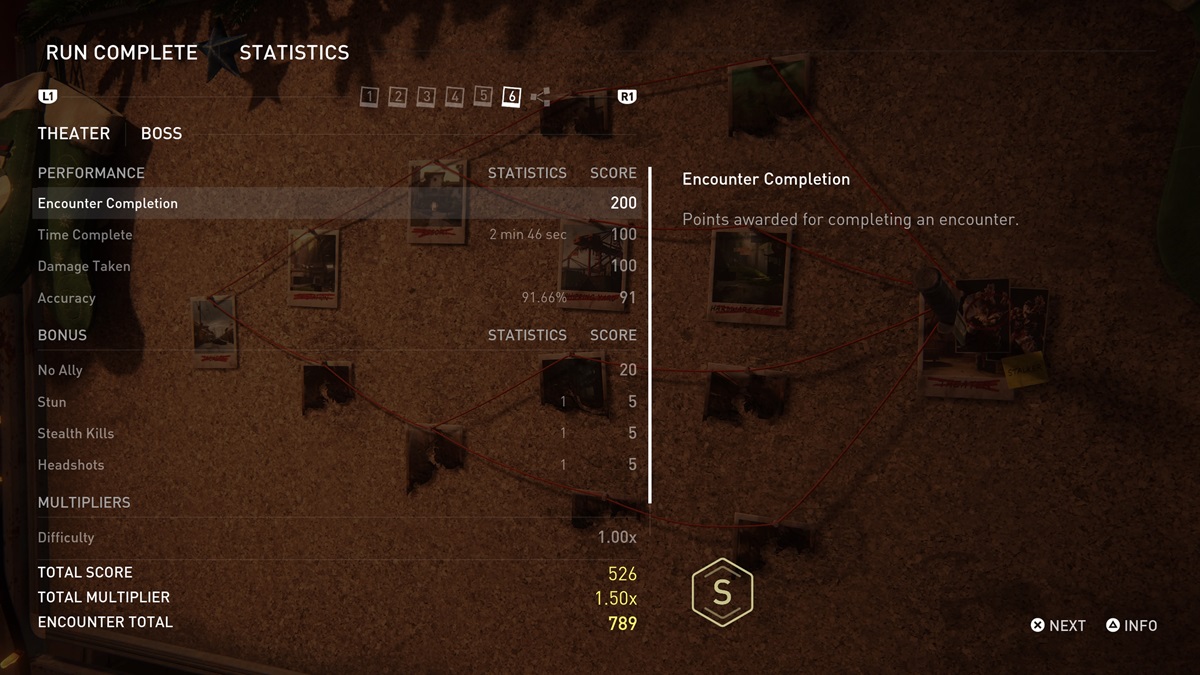
The biggest addition to The Last of Us 2 Remastered is hands-down No Return, the game’s new roguelike mode. Also available from the beginning as its own option in the main menu, it’s a highly rewarding and addictive mode that begs for just one more run. The mode includes individual level scoring and total run scoring with leaderboards to keep you striving for better performance.
Starting with just Ellie and Abby available, you can unlock seven more characters for a total of nine. For the most part, each character has a distinct playstyle, starting with unique inventory items and traits. For example, Ellie’s more balanced, starting with a 9mm handgun, Molotov cocktails, two upgrade branches, and the ability to gain 50% more Supplements after each successful encounter.
Meanwhile, Tommy starts with a kitted-out sniper rifle but can’t dodge melee attacks. Abby gains health from pummeling her enemies in close quarters and starts with a hammer. And Yara always has Lev at her side (though, Lev is a standalone playable character, too).
Runs consist of 14 encounters made of randomly selected levels from the TLoU2 campaign; level layouts are not randomized, so while you may think you’ll eventually memorize optimal pathing, where to camp, and where to stealth kill enemies, spawns and pathing keep things fresh. Of those 14 available encounters, only six are required to complete a run across six possible branching paths. All paths end in a boss battle against six possible bosses, ranging from Bloaters, a Rattler Captain, and the Rat King.
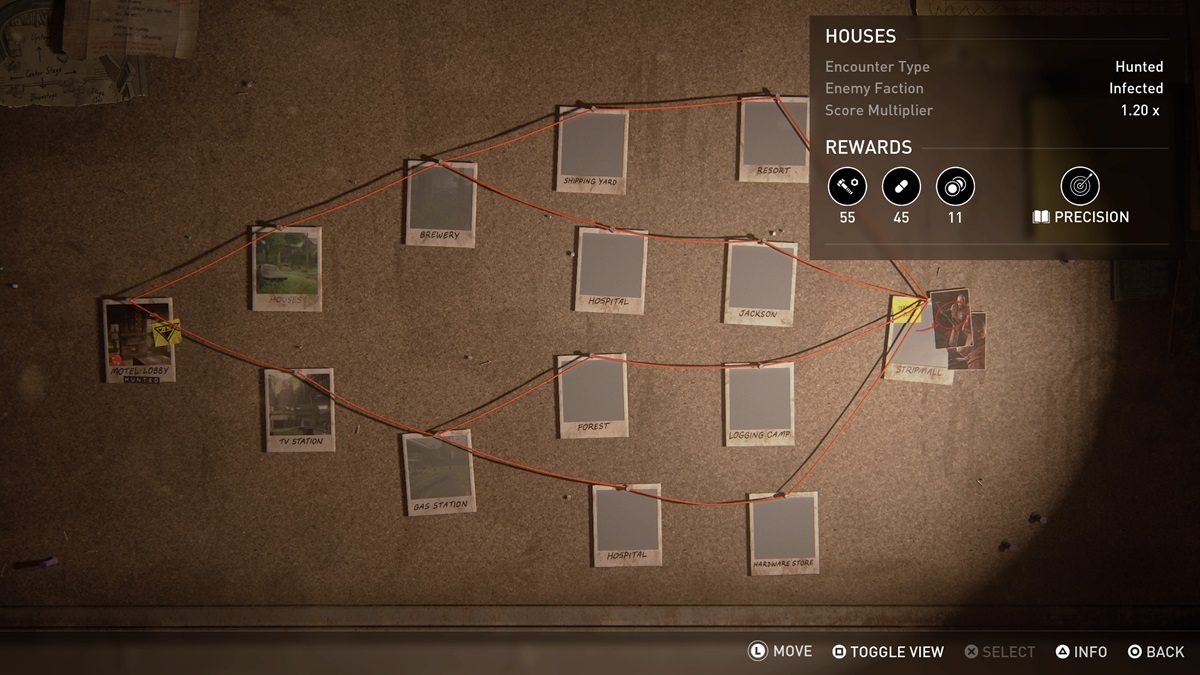
As you play, you complete overarching challenges to unlock new characters, dozens of skins, game modes, and encounter modifiers. Completing encounters nets you a random number of Parts, Supplements, and Coins, and there are also chances to get Training Manuals to open up new character upgrade paths and playstyles for that run.
Further, you can open up other challenges called Gambits, which appear during encounters and give you additional supplies. These require things like a certain number of headshot kills or kills from stealth. Dead Drops eventually appear in runs, as well, letting you deposit random items within an encounter. Doing so removes them from your inventory for an encounter, forcing you to craft more, but you’ll receive a random reward back at the hub following the encounter, adding a bit more strategy to the mix.
Between encounters, you return to a small hub where you gather the resource rewards from the previous encounter, buy weapons and items from a shop with randomly generated inventory, and upgrade your loadout at a workbench. You also select the next encounter you want to take on, and there’s a deceptive amount of strategy that goes into which path to choose based on dozens of variables.
No Return’s depth further increases as it eventually includes four modes, Assault, Hunted, Capture, and Holdout. Any of the four can be on any of the levels during any run. And some are easier to complete than others, especially depending on which of the seven run difficulties you choose between Very Light and Grounded.
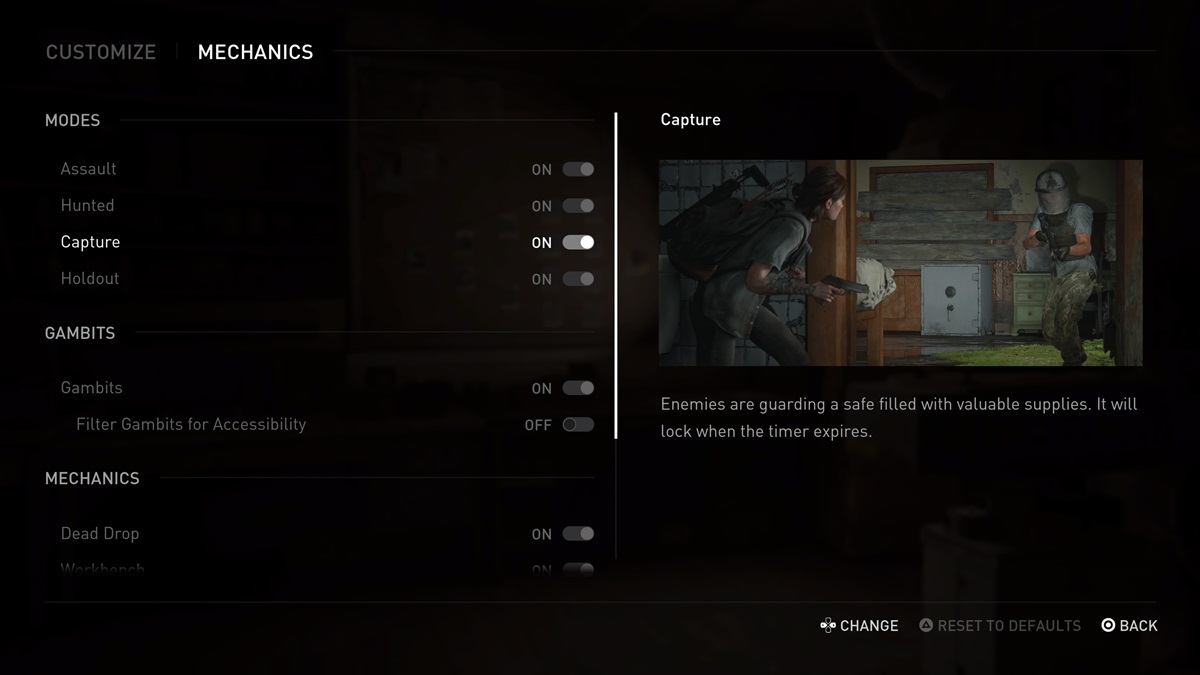
Assault pits you against waves of initially unaware enemies that you have to eliminate. Hunted pits you against enemies that know your position and actively hunt you down. Capture tasks you with reaching a guarded safe to get its resources before time runs out. And Holdout asks you to protect an ally against swarms of infected.
These become easier or more complicated with the addition of random encounter modifiers. Mods range from everything like increasing enemy health and boosting movement speed after stealth kills to locking the use of long guns, dropping random Molotovs from the sky, and adding photo filters in already dark environments that force the use of Listen Mode — and handicap characters that don’t have buffs to that skill.
Custom Runs allow you to completely customize the mechanics, enemies, and mods. If you’re going after a specific challenge, you can only allow Seaphites to spawn. Or, if you’d rather not face the Rat King, you can remove that boss from the list entirely. You can enable certain mods and disable others. And you can adjust game timers or remove workbenches from encounters.
There’s a truly excellent pace to progression and a sense of uniqueness in No Return. Despite no meta-progression, I always felt like I was getting something for completing encounters and runs — or, if I died, that I was learning how to play the game differently than in the campaign. It’s unique enough wrinkles to the larger TLoU2 formula kept me coming back for more over and over again, hour after hour.
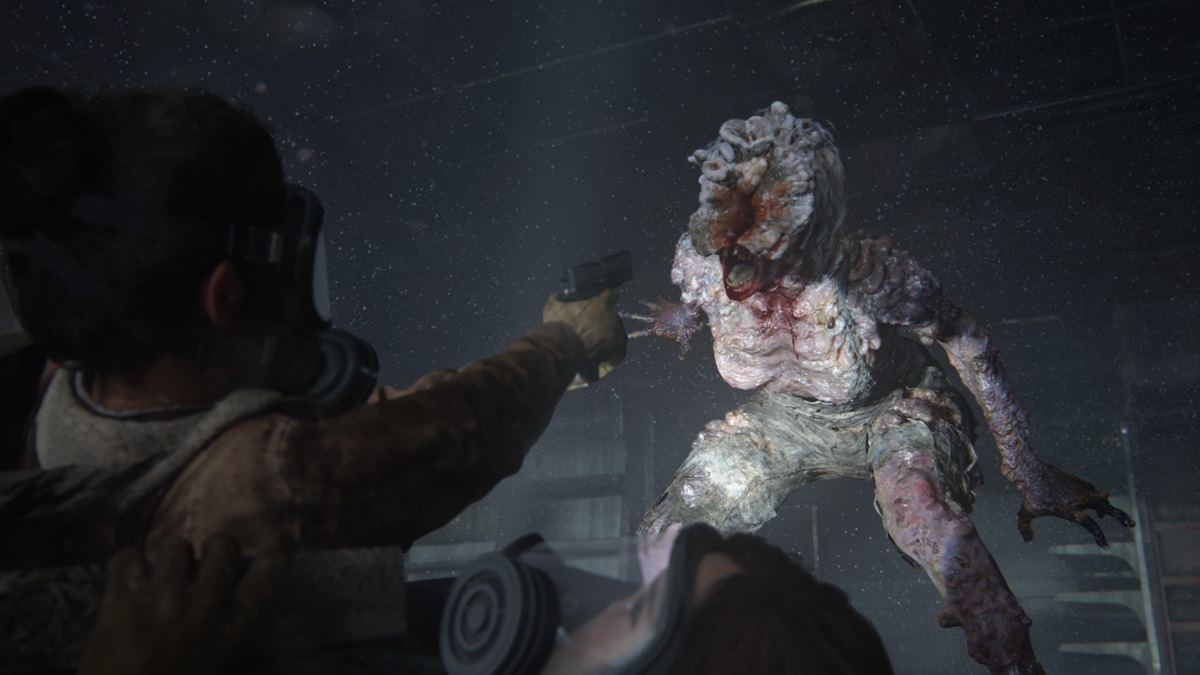
Graphically, The Last of Us 2 Remastered is gorgeous, but it’s not leaps and bounds better than the PS4 version of the game. While I initially assured myself Remastered was easily the better-looking version of TLoU2, I’m not entirely convinced after booting up the PS4 version on my PS5 — and desperately trying to compare the two.
I’ve gone back and forth with photos of the same or similar scenes numerous times now. Some models on close inspection look better in TLoU2 Remastered, and water reflections do seem to be improved. Lighting specifically has been enhanced, with the rays from incandescents (especially in that one subway sequence) quite literally shining through.
Overall, things look slightly crisper and smoother in Remastered than in the PS4 version. Ultimately, there’s only so much that can be eked out of what’s already last-gen sorcery.
While that’s not disappointing considering just how good the 2020 version of The Last of Us 2 looks on PlayStation 5, Remastered’s frame drops and freezes are — even in Performance Mode, which strives for balanced resolution and framerates rendered at 1440p, then upscaled to 4K targeting 60FPS.
In my experience, TLoU2 Remastered specifically and consistently has trouble when picking up items too quickly or exiting the backpack. I’ve experienced frame drops entering new areas, but not always, and while No Return was very smooth for a majority of my dozen hours with it, there was one instance while playing as Tommy where a new wave of enemies during a Molotov cocktail rain storm tanked my frames to an unplayable state, even freezing the game for a few seconds, persisting to the main menu.
The most egregious of these appeared after a pre-release patch during the review period (which still persisted as I reached the deadline for this review), but I experienced several big frame drops while playing before the patch. Hopefully, it will be fixed ahead of release.
The Last of Us 2 Remastered Review — The Bottom Line
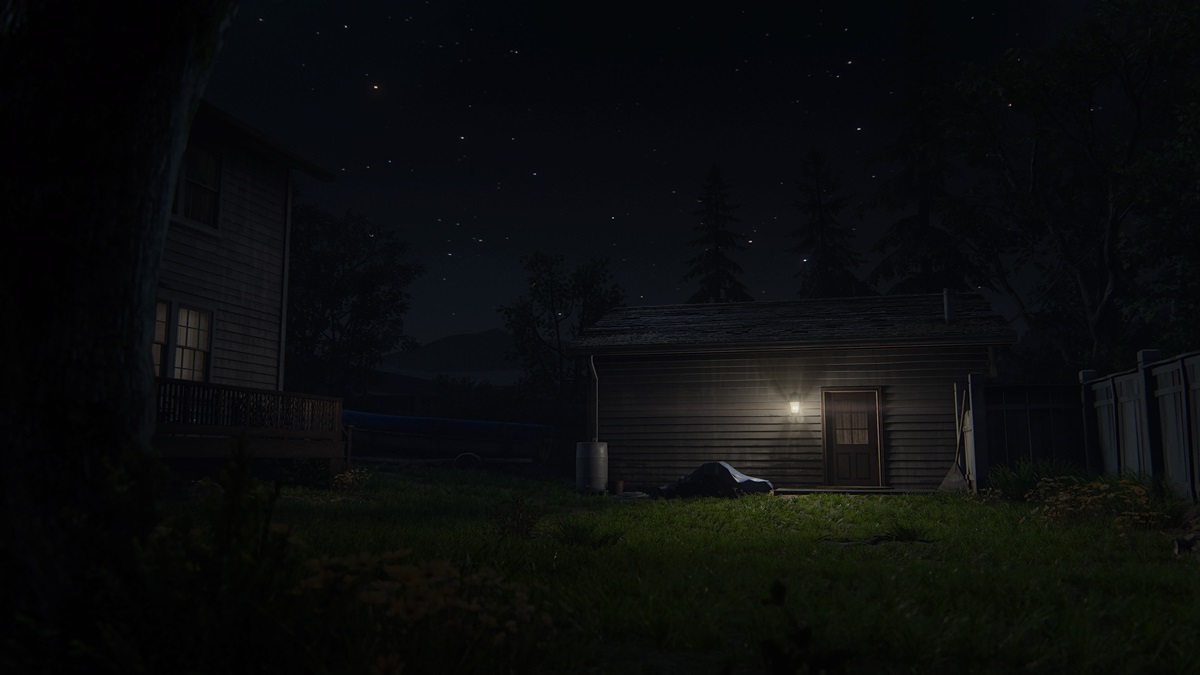
Pros
- No Return is absolutely addicting and a thrill to play.
- DualSense haptics bring TLoU2 up to current-gen PS5 standards.
- Lost Levels, while not essential, provide insight into characters and developers.
- Increased replay value with gameplay modifiers and speedrun mode.
- $10 upgrade for TLoU2 owners.
Cons
- Framerate drops and hitching while in Performance mode.
- Included podcasts can be found elsewhere.
- Other Extras are a little ho-hum.
- Guitar Free Play is still weird and wonky.
Do I think The Last of Us 2 Remastered is worth it? Absolutely. At $10, it’s a no-brainer if you want to revisit TLoU2 on PlayStation 5. No Return is the most fun I’ve had with the game’s stealth-action mechanics yet, and the DualSense haptics add depth to gameplay and cutscenes, putting tension on bow strings and adding physical context to dialogue through vibrations.
If you’ve never played TLoU2 but have been waiting for the best version of it, this is it, despite the frame drop issues and the limited Making Of content. No Return is worth the price of admission alone. Retailing for $49.99, $10 more than the PS4 version, this is the package to pick up if you’re taking this adventure for the first time.
[Note: Sony provided the The Last of Us 2 Remastered PS5 key used for this review.]

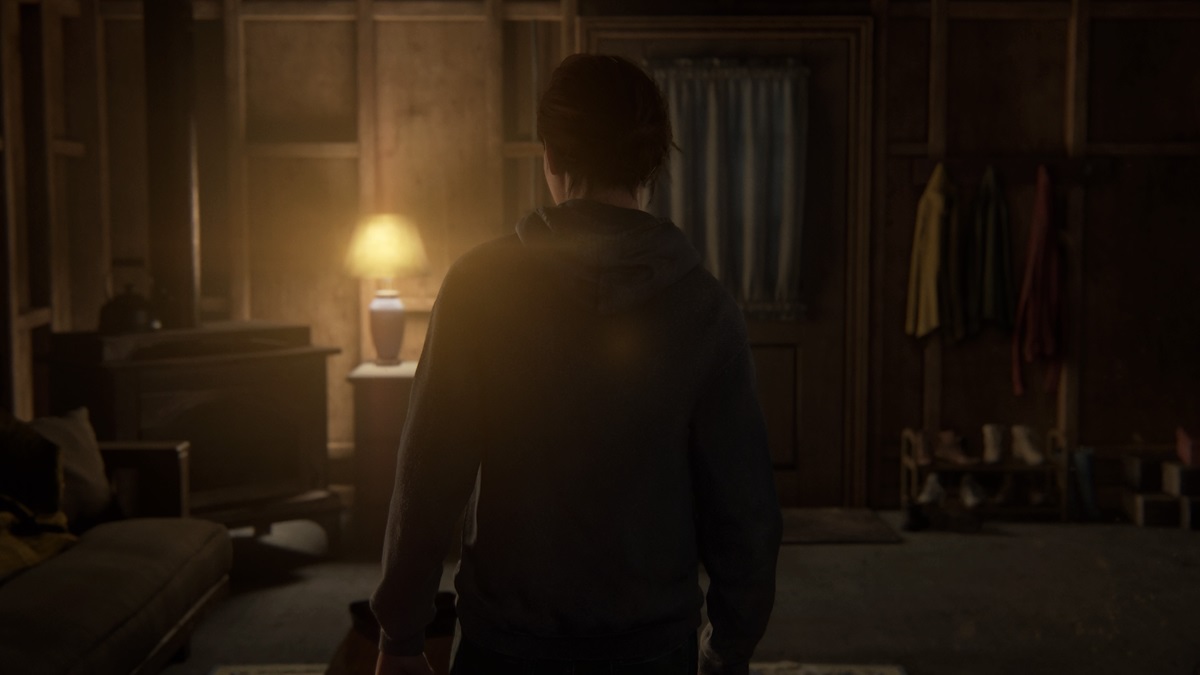





Published: Jan 16, 2024 10:00 am